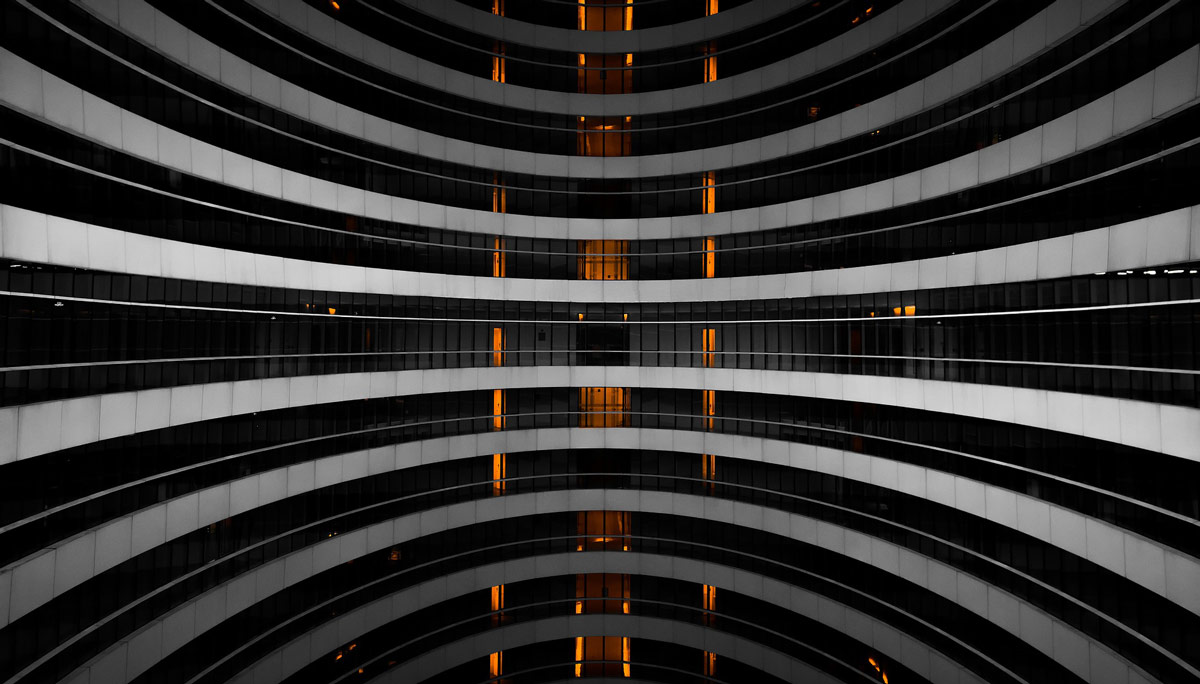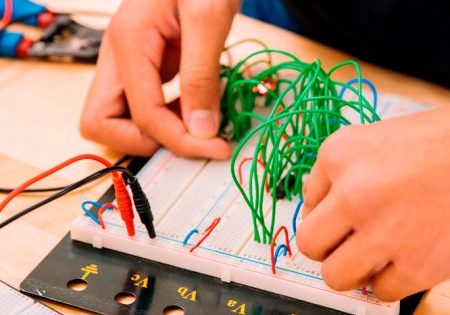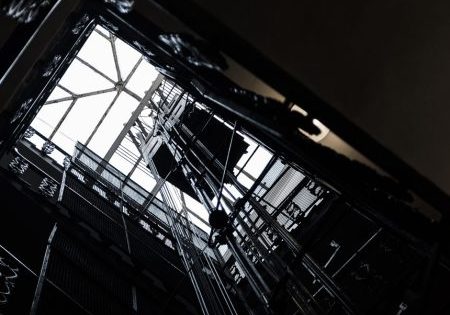
This paper was first presented virtually at the 12th Lift & Escalator Technologies Symposium in September 2021 and printed at the symposium website at liftsymposium.org.
Keywords: modernization, post-pandemic workplace, societal changes, innovation
Abstract
Modernization has been a part of the lift industry for a very long time. Buildings that are more than 100 years old have been modernized multiple times, but continue to use the original direct current machine. Both societal changes and technical innovations will make the modernizations of the very near future different from the modernizations of the present.
The motivations for modernization, societal changes and the technical innovations will be reviewed. The benefits of the “next generation” modernization will also be explored.
1. Introduction
Buildings, like most other products, compete with other buildings for customers. In the case of buildings, the customers are the entities who lease or buy the space in the building. While many factors affect the customer’s decision, some of the most important factors are location, price and building features.
New buildings have all the latest features. Existing buildings must upgrade their systems or accept lower rents. It is for this reason that buildings have modernized their lifts in the past. However, that was before COVID-19.
The post-pandemic commercial real estate market will also see changes in building use and building specifications. These changes will affect lift requirements and create new lift modernization opportunities, even for relatively new buildings that were completed before and during the pandemic.
Future modernizations will need to address the following requirements:
- Post-pandemic workplace requirements
- New technologies
The pool of existing buildings that must modernize to compete with new buildings is large. Following are three examples:
- At the end of 2020, the average commercial building in the U.S. was 52.67 years old.[1]
- In Europe, 80% of existing commercial buildings were built before 1990.[2]
- China’s period of reform and reopening began in 1978. Many of the buildings built in the first 20 years of this period will need to be modernized.[3]
2. The Post-Pandemic Workplace
2.1 Societal Change, Working Remotely
Businesses have learned that people can work productively from remote locations such as home offices. However, teamwork, collaborative efforts, mentoring and the development and maintenance of corporate culture requires people to work together in the same location.
The question that the real estate industry is trying to answer is, “How many people will ultimately continue to work remotely and how many people will return to the office?” Industry leaders are forecasting that from 60% to 80% of the workforce will return to the office.[4][5] However, many people will utilize a hybrid solution of working some days of the week in the office and some days from a remote location.
If 80% of the workforce returns to the office, it would appear there will be a very large surplus of office space and, consequently, vacancy rates will increase. However, it also appears that the workforce wants to continue to exercise social distancing. Additionally, workers have found open office spaces are less productive because it is difficult to concentrate in such an environment.
Because working remotely will create some level of surplus office space, it is possible that some office buildings will be converted to residential. In fact, your author has been informed by a lift consultant that his firm is working on two projects where an office building is being converted to a mixed-use building that includes both office space and residential units.
2.2 Touchless
Contacting a contaminated surface is one way that COVID-19 and many other bacterial and viral diseases can be transmitted. Touching a lift push button or grabbing an escalator handrail are correctly perceived to be good ways to spread disease. As a result, many lift companies are offering touchless solutions for lifts and handrail sanitizing devices for escalators.[6]
Destination Dispatch (DD) systems inherently are more “touchless” than conventional control systems with up and down buttons because one must only enter their destination. Using smart devices such as mobile phones, ID badges and facial recognition systems makes it possible to have a completely touchless lift.
It is often not necessary to replace a control system to upgrade to a touchless DD system. Many companies are offering DD overlay systems.[7]
One can, therefore, expect there will be an increase in control system modernizations or upgrades to touchless DD systems.
For safety, escalator users are encouraged to hold the handrail. Since a touchless handrail is not possible, two solutions are currently being offered: ultra-violet C sanitizers and handrails with anti-microbial coatings.[8] It is logical to expect that many escalators will be upgraded by installing these devices.
2.3 Cabin Space
Personal space has always defined the number of passengers that a lift car could transport. A value of 0.21 m² per person is commonly used. However, in the post-COVID-19 world, it is anticipated that this value will increase.
The combination of reduced passengers per floor, increased personal space in cabins and the use of contactless DD controls will have an impact on the traffic handling capacity of a lift system.
The overall impact of these factors can be evaluated using simulation. The following examples compare the traffic handling performance of a hypothetical building designed before COVID-19 and the same building with features designed post-COVID-19.
The two systems were evaluated using ELEVATE® simulation software.
2.3.1 Example 1, Before COVID-19
The building has 18 stops, 58 people per floor and six lifts with a capacity of 1350 kg and a speed of 3 m/s. The control system is Group Collective.
Using the Enhanced UP Peak calculation, the system had a 31.4 s interval at an arrival rate of 12%.
Simulations using the Peters Research Modern Office Lunch Peak 2015 template and the Peters Research Modern Office Up Peak template with a Passenger Area of 0.21 m² per person were performed. Table 1 summarizes the results:
Table 1 Simulation Results, Passenger Area: 0.21 m² & 100% occupancy
| Waiting Time | Transit Time | Time to Destination | |
| Lunch | 24.3 | 64.4 | 89.7 |
| Up Peak | 9.3 | 70.0 | 79.4 |
It should be noted that, with a passenger area of 0.21 m², the maximum number of passengers transported per trip is 14.
2.3.2 Example 2, Post-COVID-19 Traffic
A second set of simulations was run using post-COVID parameters. The number of persons per floor was reduced to 43, which represents 80% of the 58 persons pre-COVID-19. Personal space was increased to 0.5 m² per person. This limits the maximum passengers per trip to six. Additionally, a touchless DD system (ACA) control system was used. Table 2 summarizes the results:
Table 2 Simulation Results, Passenger area: 0.5 m² & 80% Occupancy
| Waiting Time | Transit Time | Time to Destination | |
| Lunch | 26.8 | 35.4 | 62.2 |
| Up Peak | 19.0 | 36.0 | 55.0 |
One can see that the existing lifts with new controls, when applied with post-COVID–19 conditions, had improved traffic handling performance.
2.4 Ventilation
Traditionally, there have been two approaches to forced cabin ventilation:
- Extraction. Ceiling fans extract air from inside the cabin and vent it into the hoistway.
- Supply. Ceiling fans force air from the hoistway into the cabin.
In response to COVID-19, lift companies are offering supply type ventilation systems that pass the air either through an ionization chamber or an ionization chamber combined with a filter.[8][9] Passengers can still spread disease by sneezing or talking, but these systems ensure that the air entering the cabin is sanitary and that the air flow will prevent contaminates from lingering in the cab.
Another method of sanitizing supply-type ventilation systems is the use of UV-C lamps near the supply intake.[10] This approach works in the same manner as the UV-C systems used for escalator handrails.
3. New Technologies
There are two technologies that will create a demand for future modernizations or system enhancements. These technologies are Connectivity and Machine Learning.
3.1 Connectivity
Connectivity, as it relates to information technologies, is defined as “the ability to connect to or communicate with another computer or computer system.” [11]
For the lift industry, it typically signifies that the lift control system is connected to a remote computer using cloud technologies. The information sent from the controller can be used for many things, including Machine Learning (ML), interfaces to other building systems, applications (apps) used by building managers and apps used by lift passengers.
Connectivity systems that connect directly to the control system are available for most new or recently installed lifts.
Existing lifts can be connected using sensor packages that have little or no connection to the control system. Using one of the many commercially available connectivity systems, virtually any lift can have some level of connectivity.[12]
The data from the connectivity system can be processed and made available to other computer programs by way of an API. An API is an Application Programming Interface.[13] A User Interface (UI) allows a person to communicate with a computer. An API lets a computer communicate with another computer.
The following are some examples of computer systems that may want to access a lift system’s API:
- A Building Management System (BMS) computer
- A security system computer
- A facilities management company’s computer
- A service robot that wants to use the lift
- A government agency computer
Apps are applications that can be downloaded onto a mobile device such as a smartphone or a tablet.[14] Apps for lifts are used as interfaces to permit service personnel, passengers and building managers to access data about or communicate with lifts and escalators. The following are some examples of lift apps:
- App to place calls in a destination dispatch system
- App to help service personnel diagnose lift problems
- App for facility managers and building engineers to receive performance data and alarms about their lifts and escalators
Connectivity will be possible only if lifts and escalators are upgraded or modernized.
3.2 Machine Learning and AI
The goal of AI is to develop computers and software that mimic human intelligence. Machine Learning (ML) is one form of AI. ML involves making predictions based on properties learned from data.[15]
There are many forms of ML. The following are two forms that can be used for lifts:
Classification and Regression Trees (CART)
- Description: These trees are decision trees that learn from what has occurred in the past and use that knowledge to make predictions about future outcomes.[16]
- Example: The output of a lift remote monitoring system records what has happened in the past. Analyzing this data using CART might reveal a sequence of events and/or error codes that almost always leads to a shutdown within two weeks.
Artificial Neural Networks (ANN)
- Description: ANNs are computing systems inspired by the biological neural, such as human and animal brains.[17] These networks have the ability to learn.
- Example: An ANN is shown the vibration signature of a properly functioning lift component and told it is the signature of an undamaged component. It is also shown the vibration signature of a damaged component and told it is the signature of a damaged component. Many vibration signatures are shown to the ANN, and in time the ANN learns to identify damaged components by their signature.
- Because of its ability to learn and predict, ML will make possible tremendous improvements in reliability and maintenance efficiency.[18] Soon, it will be possible to almost completely eliminate lift breakdowns, except those caused by external factors such as misuse, abuse, vandalism or acts of God.
Building owners and managers want the improvement in uptime that is made possible by ML. ML generally requires connected lifts and escalators.
4. Conclusions
The modernizations of the future will be driven by societal changes and innovation.
The societal changes are the result of our experience with the COVID–19 pandemic. Society knows how to work remotely at least a portion of the time and that we are more comfortable with greater personal space and less contact with potentially contaminated surfaces.
Building owners, building managers and building occupants want the benefits made possible by connectivity.
Even recently completed or modernized lifts are candidates for additional upgrades to deal with the changing workplace. The market for lift modernizations and upgrades has never been better.
References
[1] Feldstein, S. 2020, Research Commentary. Available from: https://commbuildings.com/ResearchComm.html Last accessed: June 27, 2021.
[2] “iRESIST+ Innovative seismic and energy retrofitting of the existing building stock Available from: https://ec.europa.eu/jrc/en/research-topic/improving-safety-construction/i-resist-plus?qt-news_events_tabs_on_basic_pages=1 Last accessed: June 27, 2021
[3] Forty years of reform and opening up: China’s progress toward a sustainable path. Available from: https://advances.sciencemag.org/content/5/8/eaau9413.full#:~:text=The%20year%202018%20marks%20the%2040th%20anniversary%20of,at%20the%20crossroad%20of%20a%20future%20development%20alternative Last accessed: June 27, 2021.
[4] RXR Realty CEO Scott Rechler on his outlook for return to the office. Available from: https://www.cnbc.com/video/2021/06/18/return-to-the-office-commercial-real-estate.html Last accessed: June 24, 2021
[5] What employers need to know about managing hybrid work environments. Available from: https://www.cnbc.com/video/2021/05/25/return-to-office-hybrid-model-post-pandemic.html Last accessed: June 24, 2021
[6] Gen3 Brochure Available from: https://www.otis.com/documents/256045/333123909/OTIS_Gen3Brochure_Eng_Final.pdf/b842c11 e-a85a-0b5d-4a2f-5d64d854b4e0?t=1621911510749 Last accessed: June 29, 2021.
[7] KONE Modernization Overlay Available from: https://www.kone.sa/en/Images/Modernization_Overlay_factsheet_tcm262-78820.pdf Last accessed: July 29, 2021.
[8] Sanitizing Products Available from: https://www.otis.com/en/us/tools-resources/safety- products-features/escalator-sanitizing-products Last accessed: June 26, 2021
[9] VFA Solutions Available from: https://www.vfa-solutions.com/en/our-technology/aspra-air-purification/ Last accessed: June 26, 2021
[10] COVID-19 Ventilation, Version 5 (2021) CIBSE, London
[11] Connectivity Available from: https://www.merriam-webster.com/dictionary/connectivity Last accessed: June 27, 2021
[12] Smith R. IOT, Magic or Myth (2020) In: Proceedings of the 11th Symposium on Lift and Escalator Technologies, Northampton
[13] API Available from: https://en.wikipedia.org/wiki/API Last Accessed: June 28, 2021
[14] Apps Available from: https://www.merriam-webster.com/dictionary/app Last accessed: June 28, 2021
[15] Machine Learning Available from: https://en.wikipedia.org/wiki/Machine_learning Last accessed: July 24, 2021
[16] Decision Tree Learning Available from: https://en.wikipedia.org/wiki/Decision_tree_learning Last accessed: July 24, 2021.
[17] Artificial Neural Networks Available from: https://en.wikipedia.org/wiki/Artificial_neural_network Last accessed: July 26, 2021.
[18] Smith, R. The Internet of Things, Big Data, Machine Learning, and the Lift & Escalator Industry (2015) In: Proceedings of the 5th Symposium on Lift and Escalator Technologies, Northampton
Also read: Computational Environment for Simulating Impact of Building Sway on High Rise Lifts
Get more of Elevator World. Sign up for our free e-newsletter.










